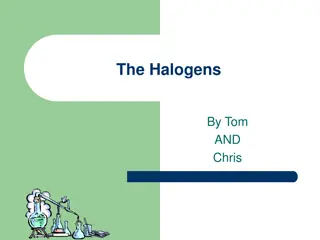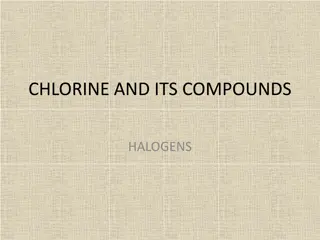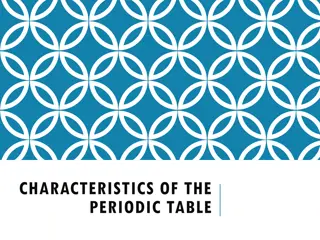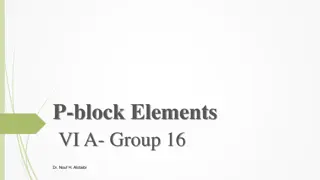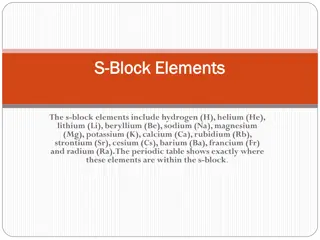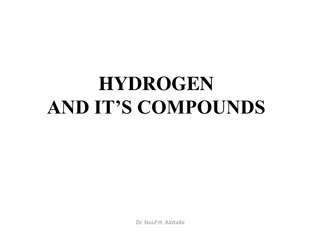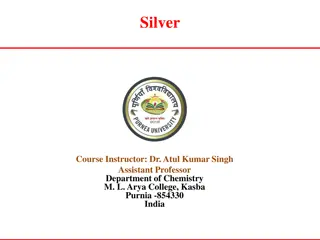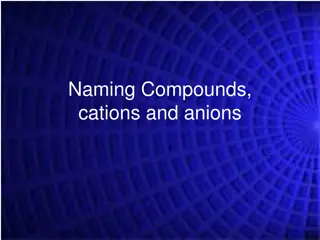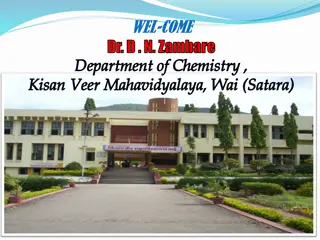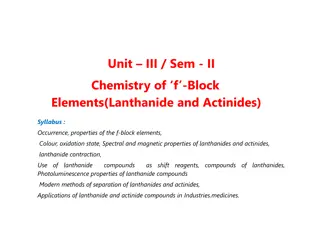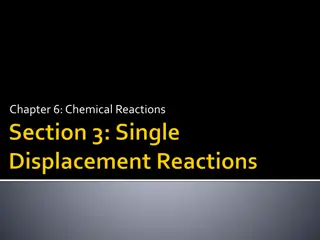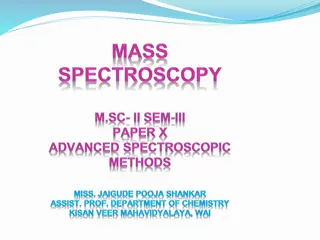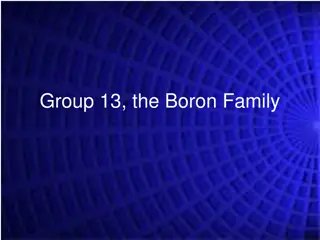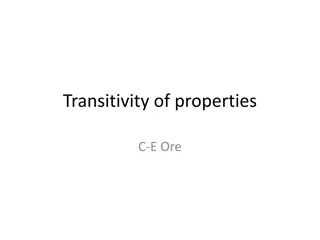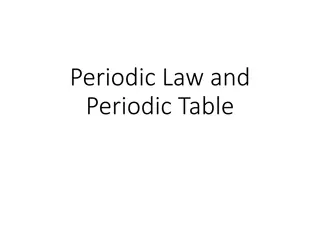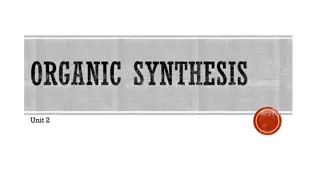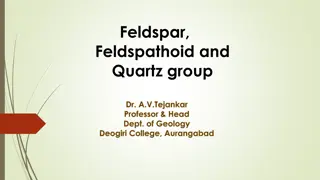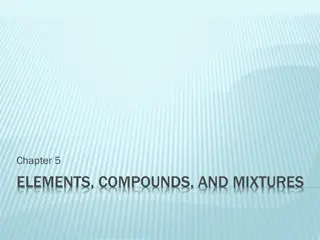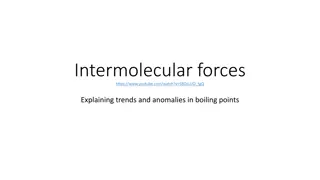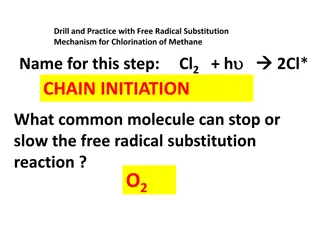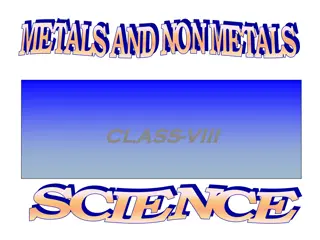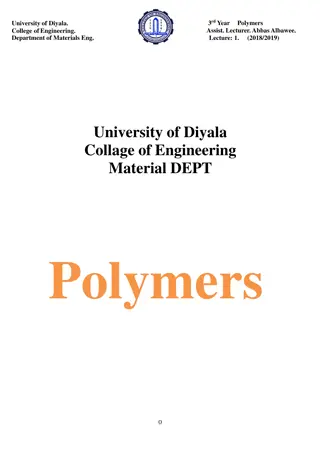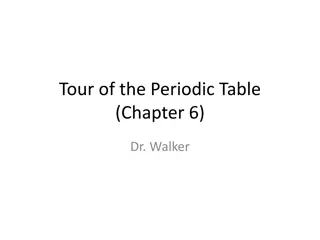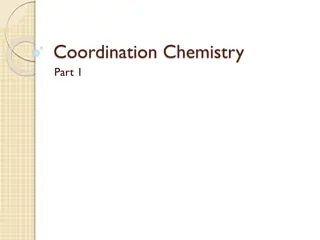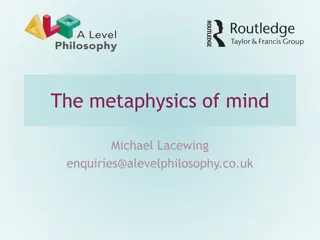Group 17 Elements: The Halogens and Their Properties
Group 17 elements, known as the Halogens, include fluorine (F), chlorine (Cl), bromine (Br), iodine (I), and astatine (At). They exhibit unique properties such as small atomic radii, high ionization energy, and strong oxidizing power. The halogens form diatomic molecules and have varying electron configurations. Their compounds, like hydrogen halides, show distinct reactivity with hydrogen. Understanding the trends and characteristics of Group 17 elements is crucial in chemistry studies.
Download Presentation

Please find below an Image/Link to download the presentation.
The content on the website is provided AS IS for your information and personal use only. It may not be sold, licensed, or shared on other websites without obtaining consent from the author. Download presentation by click this link. If you encounter any issues during the download, it is possible that the publisher has removed the file from their server.
E N D
Presentation Transcript
P-block Elements VI A- GROUP 17
Group 17: The Halogens The Halogen Group 17 elements, fluorine (F), chlorine (Cl), bromine (Br), iodine (I) and astatine (At), belong to halogen family. Electron configurations ns2np5 (n is the period number). In its elemental state, all halogens atoms combine to form diatomic molecules (ex F2,I2, ) With the exception of F, the halogens can also lose valence electrons and their oxidation states can range from -1 to +7
Group 17: The Halogens General trend Atomic and ionic radii: Halogens have the smallest atomic radii in their respective periods because of maximum effective nuclear charge. Ionisation enthalpy: They have very high ionization enthalpy because of small size as compared to other groups. Electron gain enthalpy: Halogens have maximum negative electron gain enthalpy because these elements have only one electron less than stable noble gas configuration. Electron gain enthalpy becomes less negative down the group because atomic size increases. Eelctronegativity: These elements are highly electronegative and electronegativity decreases down the group. They have high effective nuclear charge.
Group 17: The Halogens General trend Bond dissociation enthalpy: Bond dissociation enthalpy follows the order Cl2 > Br2 > F2 > I2 This is because as the size increases bond length increases. Bond dissociation enthalpy of Cl2 is more than F2 because there are large electronic repulsions of lone pairs present in F2. Colour: All halogens are coloured because of absorption of radiations in visible region which results in the excitation of outer electrons to higher energy levels. Oxidising power: All halogens are strong oxidising agents because they have a strong tendency to accept electrons. Order of oxidizing power is F2> Cl2> Br2> I2
Group 17: The Halogens Because the atoms INCREASE in atomic size down the group, the electron clouds of these non polar atoms become increasingly polarized, which leads to weak van Der Waals forces among the atoms. Thus, the formation of liquids and solids is more possible for these Gaseous Liquid Solid Chlorine Bromine Iodine heavier elements because of their melting and boiling points.
Group 17: The Halogens General trend Trends in selected physical properties of the group 17 elements
Group 17: The Halogens Compounds of the Halogens (Hydrogen Halides) All the halogens react directly with hydrogen, forming covalent bonds and (at sufficient levels of purity) colorless gases at room temperature. Hydrogen reacts with fluorine, chlorine, bromine, and iodine, forming HF, HCl, HBr, and HI, respectively. The hydrogen halides (HX) can be prepared by the direct reaction of the elements. H2(g) + X2(g) 2HX(g) Fluorine reacts explosively by a radical chain reaction as soon as the F2 and H2 are mixed. The mixture of H2 and Cl2 explodes when it is exposed to light. Br2 and I2 react much more slowly. Another way to produce the hydrogen halides is the reaction of a metal halide with a non-volatile acid CaF2(s) + 2H2SO4(aq, conc) All hydrogen halides dissolve in water to give acidic solutions Ca(HSO4)2(aq) + 2HF(g).
Group 17: The Halogens Compounds of the Halogens (Hydrogen Halides) Reactivity with H2: The bond strength of these molecules decreases down the group: HF>HCl>HBr>HI. Acidic strength: HF < HCl < HBr < HI increases down the group Stability: HF > HCl > HBr > HI decreases down the group This is because of decrease in bond dissociation enthalpy. Boiling point: HCl < HBr < HI < HF increases down the group expect HF HF has strong intermolecular H bonding As the size increases van der Waals forces increases and hence boiling point increases
Group 17: The Halogens Reactivity with metals: Halogens react with metals to form halides. Ionic character: MF > MCl > MBr > MI decreases down the group Halides in higher oxidation state will be more covalent than the one in the lower oxidation state.
Group 17: The Halogens Compounds of the Halogens (Oxoacids) Fluorine forms only one oxoacid HOF (Fluoric (I) acid or hypofluorous acid) due to high electronegativity. Acid strength: HOF > HOCl > HOBr > HOI This is because Fluorine is most electronegative. Acid strength: HOCl < HClO2 < HClO3 < HClO4 Reason: HClO4 H+ + ClO4- The acid strengths and the oxidizing ability of the halogen oxoacids increase with the oxidation number of the halogens most stable
Group 17: The Halogens Compounds of the Halogens (Oxoacids) Hypohalous acids (HXO note +1 oxidation number) are prepared by direct reaction of the halogen with water Cl2(g) + H2O(g) Hypohalite ions (XO-) are formed when a halogen is added to the aqueous solution of a base HClO(g) + HCl Calcium hypochlorite (Ca(ClO)2) is used to chlorinate swimming pools because when placed in the pool it forms Ca2+ ions which form insoluble calcium carbonate which can be removed through filter systems. Because hypochlorites (HClO) oxidize organic material they are used in liquid household bleaches and as disinfectants.
Group 17: The Halogens Compounds of the Halogens(Interhalogen) Reactivity of halogens towards other halogens: Binary compounds of two different halogen atoms of general formula X X n are called interhalogen compounds where n = 1, 3, 5, or 7 These are covalent compounds. Interhalogen compounds are more reactive than halogens because X-X is a more polar bond than X-X bond. All are diamagnetic. Their melting point is little higher than halogens. XX (CIF, BrF, BrCl, ICl, IBr, IF) (Linear shape) XX 3 (CIF3, BrF3, IF3 , ICl3) (Bent T- shape) XX 5 CIF5, BrF5, IF5, (square pyramidal shape) XX 7 IF7 (Pentagonal bipyramidal shape)
Group 17: The Halogens Compounds of the Halogens(Interhalogen)
Group 17: The Halogens Compounds of the Halogens(Interhalogen) These compounds are prepared by direct reaction of the two halogens, the product formed being determined by the proportions of the reactants used Example: Cl2(g) + 3F2 (g) Cl2 (g) + 5F2 (g) 2ClF3(g) 2ClF5(g)
Group 17: The Halogens The Elements (Fluorine) Fluorine is the halogen with greatest abundance in the Earth s crust. It occurs widely in many minerals Fluorine is the most strongly oxidizing element. Therefore, it cannot be obtained from its compounds by oxidation with another element. Fluorine is produced by electrolyzing an anhydrous molten mixture of potassium fluoride and hydrogen fluoride at about 75 C with a carbon anode Most of the F produced by industry is used to make the volatile solid UF6 used for processing nuclear fuel. The next biggest user of F is the production of SF6 for electrical equipment. It is the most electronegative element. It has an oxidation number of -1 in all its compounds. The high electronegativity and small size (it allows for several F atoms to pack around a central atom) allow it to oxide other elements to their highest oxidation number. F is less soluble than other halides.
Group 17: The Halogens The Elements (Chlorine) Chlorine is more soluble in water than fluorine. As a result even though there is more F present in the Earth s crust the oceans are salty with chlorides rather than fluorides Cl is one of the most heavily manufactured chemicals. It is obtained from electrolysis of molten rock salt (NaCl) or brine. Cl will directly react with nearly all the elements except for C, N,O and the noble gases It is a strong oxidizing agent. It is gas. Uses: In a number of industrial processes, including the manufacture of plastics, solvents, and pesticides. It is also used as bleach in the paper and textile industries and as a disinfectant in water treatment plants. In addition, Cl is used to produce Br.
Group 17: The Halogens The Elements (Bromine) Bromine is a reddish-brown fuming liquid at room temperature. It is the only non-metal that is a liquid at normal room conditions. Bromine on the skin causes painful burns that heal very slowly. It is an element to be treated with the extreme respect in the laboratory. Elemental bromine is made by oxidation, removal of electrons from bromide ions in brine. Uses: Properties: Br is used widely in synthetic organic chemistry because of the ease at which it can be Corrosive added to and removed from organic chemicals. Red-Brown Organic bromides are incorporated into textiles as fire retardants and are used as Liquid pesticides. Inorganic bromides, particularly silver bromide, are used in photographic emulsions
Group 17: The Halogens The Elements (Iodine) When iodine dissolves in organic solvents it produces solutions having a variety of colors. Iodine is an essential trace element for living systems; a deficiency in humans leads to a swelling of the thyroid gland in the neck Iodides are added to table salt (iodized salt) to prevent this deficiency.
The Elements (Astatine) Astatine could be described as the most rare element on earth. All isotopes are radioactive; even its name is Greek for "unstable. At occurs naturally as one of the atoms produced when the 235U isotope undergoes radioactive decay. However, astatine does not stay around long. Most of its identified isotopes have half-lives of less than one minute. Weighable amounts of astatine have never been isolated, and little is known about its chemical or physical properties. In a mass spectrometer, astatine behaves much like the other halogens, especially iodine. There is evidence of compounds formed by its combining with other halogens, such as AtI, AtBr, and AtCl.



